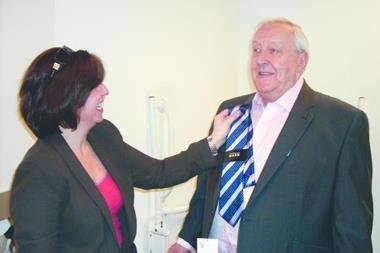Using the latest communications technology to cultivate long-term, one-to-one customer relationships will give you a competitive edge, advises Ellis Williams
In the increasing uncertainty of a global recession, insurers are being forced to re-evaluate their approach to customer service. Even the most traditional businesses can no longer ignore the competitive advantages and cost savings to be gained through more innovative tactics.
Platforms are now available that enable mass personalised communications across a multitude of channels from email to video messaging. This means that conventional insurers will have the opportunity to use 21st-century strategies as they grapple with the expectations of an increasingly tech-savvy customer base.
The average consumer is exposed to a whopping 3,000 marketing messages each day. At the best of times, it is important for insurers to differentiate their brands and products. In a recession, such differentiation is crucial to their survival.
Consumers face a broad range of communication channels and devices – television, radio, print, online, fax and the multitude of offerings from phone devices. Previously, using many of these technologies (such as SMS or email) in customer services has been a blunt instrument; often companies would send blanket emails or SMS messages that did nothing more than irritate customers and were swiftly dumped in the spam folder.
Mass communications technology now enables companies to avoid these pitfalls through personalisation, making customers feel as if the company is talking directly to them. The technology allows sophisticated profiling that, in turn, allows insurers to pinpoint which products or messages will be of greatest interest to each individual.
Not only that, but it will also identify which mechanism is the most appropriate means of communication with each customer and identify the best time to make that communication.
This means businesses can put across a relevant and valuable message through the channel that is most convenient to the customer. Customer relationship management (CRM) schemes will become increasingly intelligent and, as such, of much greater value to insurers.
CRM software stores current and potential client details such as names and phone numbers, enabling a business to better manage its customers. The first wave of systems failed to deliver any real return on insurers’ investments. But the updated versions don’t simply store basic data on customers – they enable the data to be accessed by different parties.
These capabilities will engender a shift in company-customer relationships. For insurers, the emphasis will be on convenience for the user rather than for the business. By recognising the merit of this approach and successfully implementing it, they will gain a real competitive edge as they battle through the downturn.
A more personalised approach to customer service is useful for both businesses and consumers, as is one integrated communications platform. It is useful when dealing with business customers because it allows employees who are designated personal customer managers more flexibility in their communications and provides them with a unified workflow.
Meanwhile, the availability of SMS in addition to email, voice and video drives multi-channel working.
The integrated platform presents insurers with a variety of new and cost-effective ways of engaging with consumers. For example, following up on home or motor insurance quotes usually involves multiple phone calls and messages, something which tends to annoy the customer.
By identifying the most convenient means of contact, the insurer avoids this “harassment”. It makes for a more balanced relationship between company and customer by promoting inbound responses across numerous channels. It also makes following up quotes much cheaper as it eliminates the need for multiple phone calls.
Insurers can use the same technology to create longer-term personalised campaigns. Initially, a customer might receive a personal welcome message, through the most convenient channel, thanking them for taking out a policy. Contact with this customer then can be maintained and cultivated over time, with opportunities to tell him or her about other products.
Brand loyalty also can be increased through offering discounts on the appropriate product at the appropriate time. Insurers should not underestimate how important this sort of personalised communication is. The revenue gained can be vast.
The same technology allows for self-service on a large scale; it is also convenient. The analogy of a cash withdrawal from a bank is useful here: most customers would rather use the cash machine on the corner than queue to get money out at the counter.
Many insurers still have incredibly labour-intensive, inefficient and time-consuming contact centre practices. Automated speech recognition (ASR) makes the transition from human interaction to automation.
For example, in the event of severe flooding it is likely that the number of claims being made will be substantially higher than average.
In this scenario, a call centre could well be overwhelmed by a volume of calls that it is not equipped to deal with. Mass communications technology will allow for immediate responses to many callers at the same time.
Its proactive aspect may help insurers to pre-empt claims in a way that previously was not possible. Customers in the affected areas could be alerted to the most efficient means of making a claim or provided with useful contact information. This sort of activity is emblematic of a new approach to service that makes reassuring the customer a priority rather than a sideshow.
Such technologies are designed to be hassle-free for the user, which means that retraining of staff is unlikely to be costly or time-consuming. And users also have complete control of their communications strategy and can make changes at speed at any stage.
The technologies also use sophisticated monitoring, measuring and tracking systems, so every campaign can be evaluated in fine detail almost as it happens.
Integrated communications platforms could revolutionise customer engagement across the sector. There is a tangible shift away from the one-size-fits-all approach. Instead, relevance, value and convenience for the customer have become priorities. These tools are the instruments that will promote new ways of working in recessionary times – and in the process will save companies serious amounts of money. IT
Ellis Williams is head of CCS products for Cable & Wireless Europe, Asia and US





































No comments yet